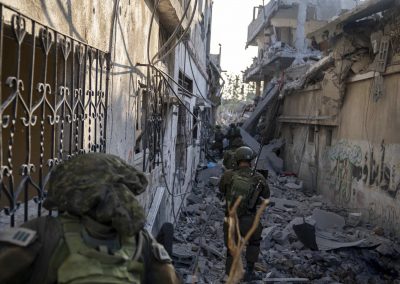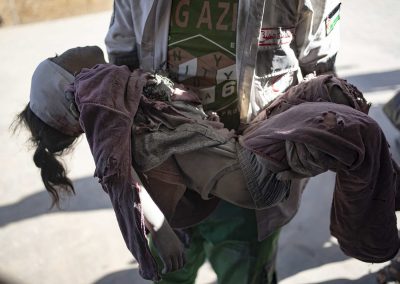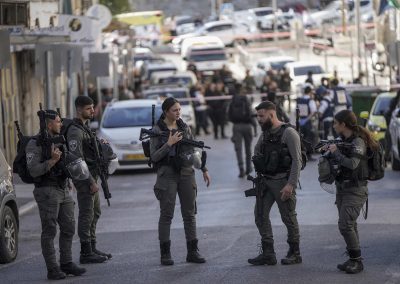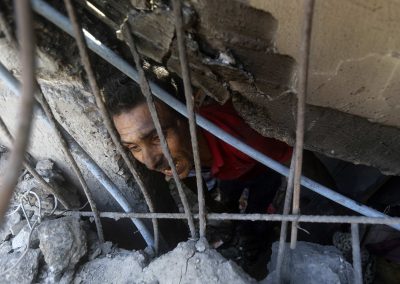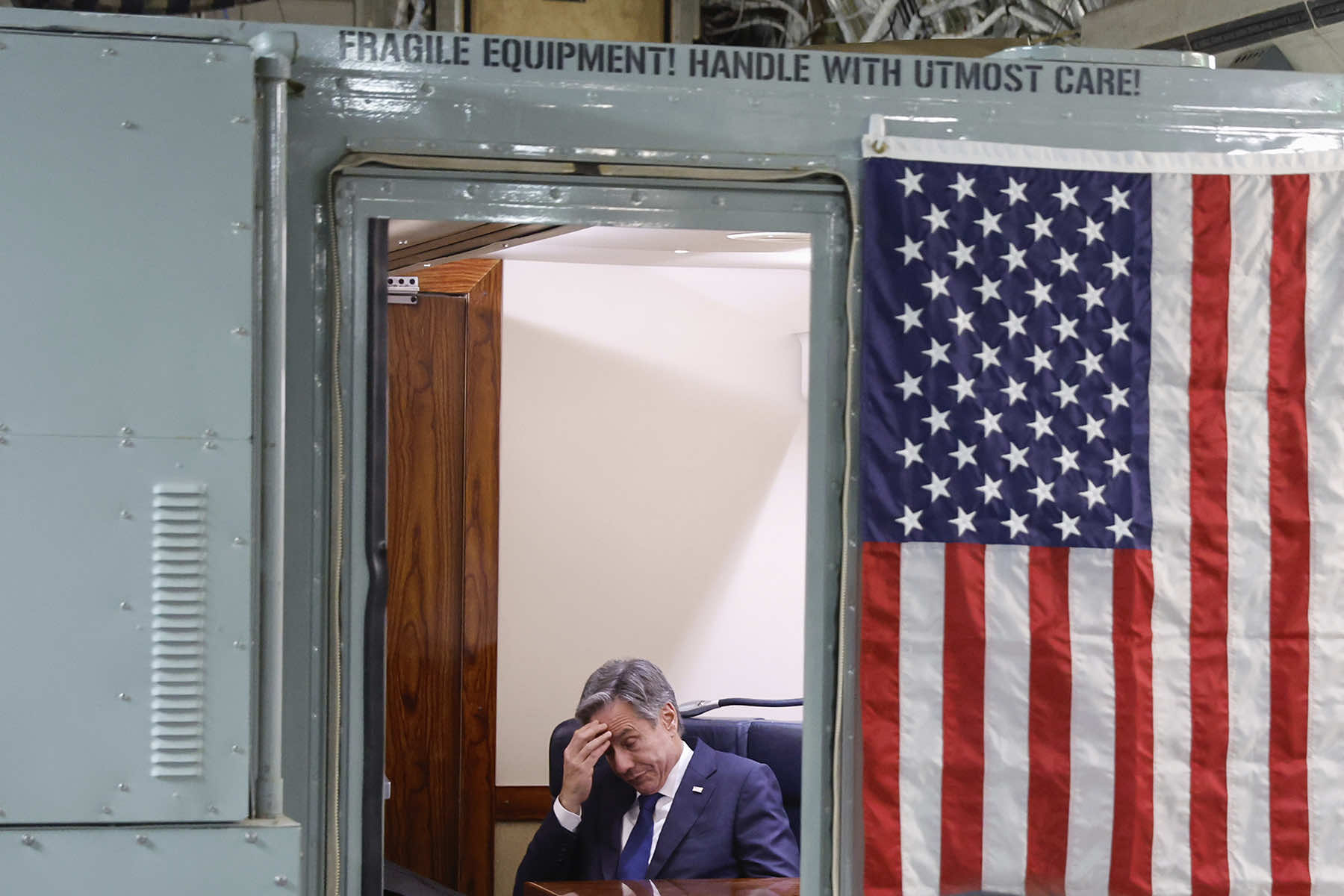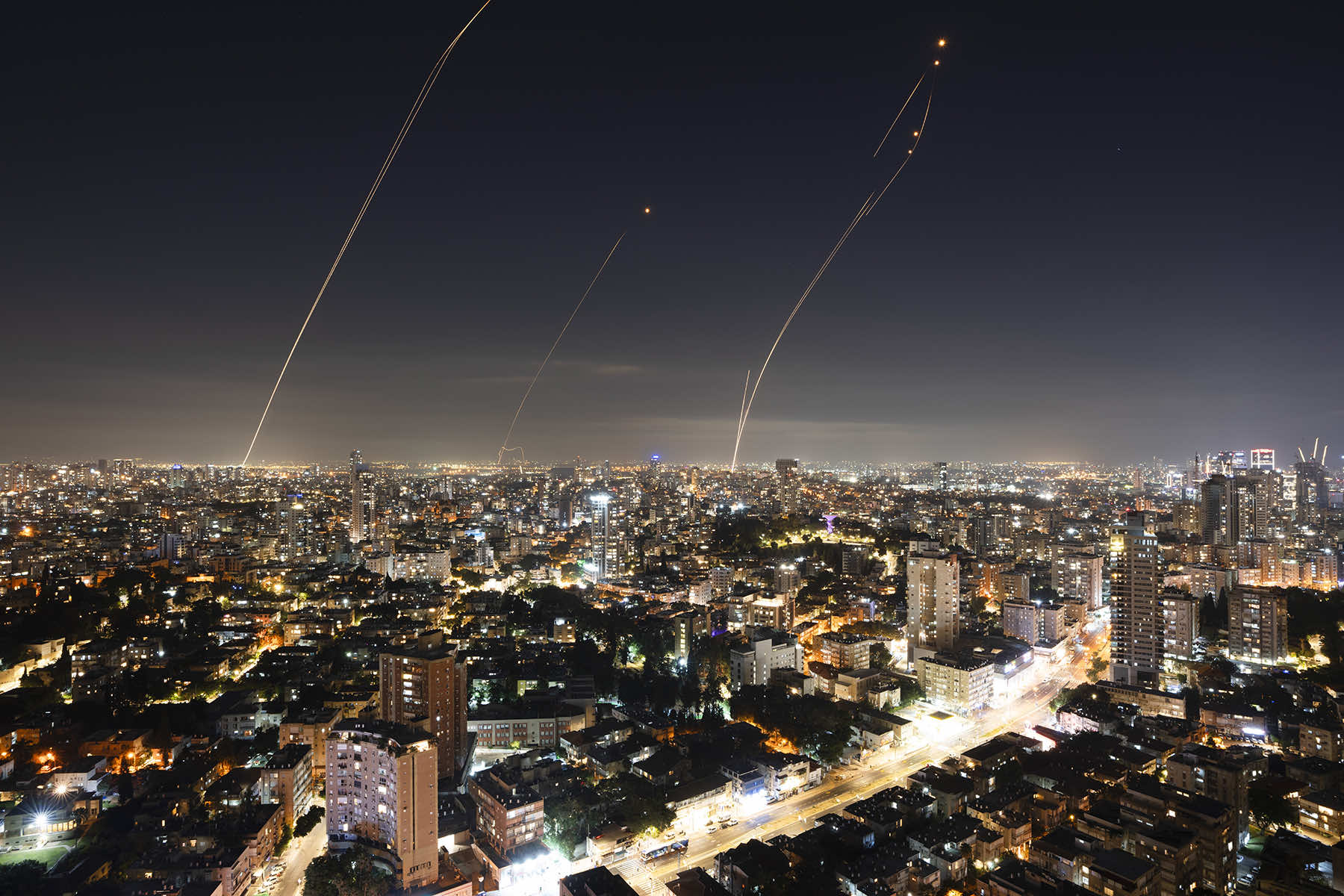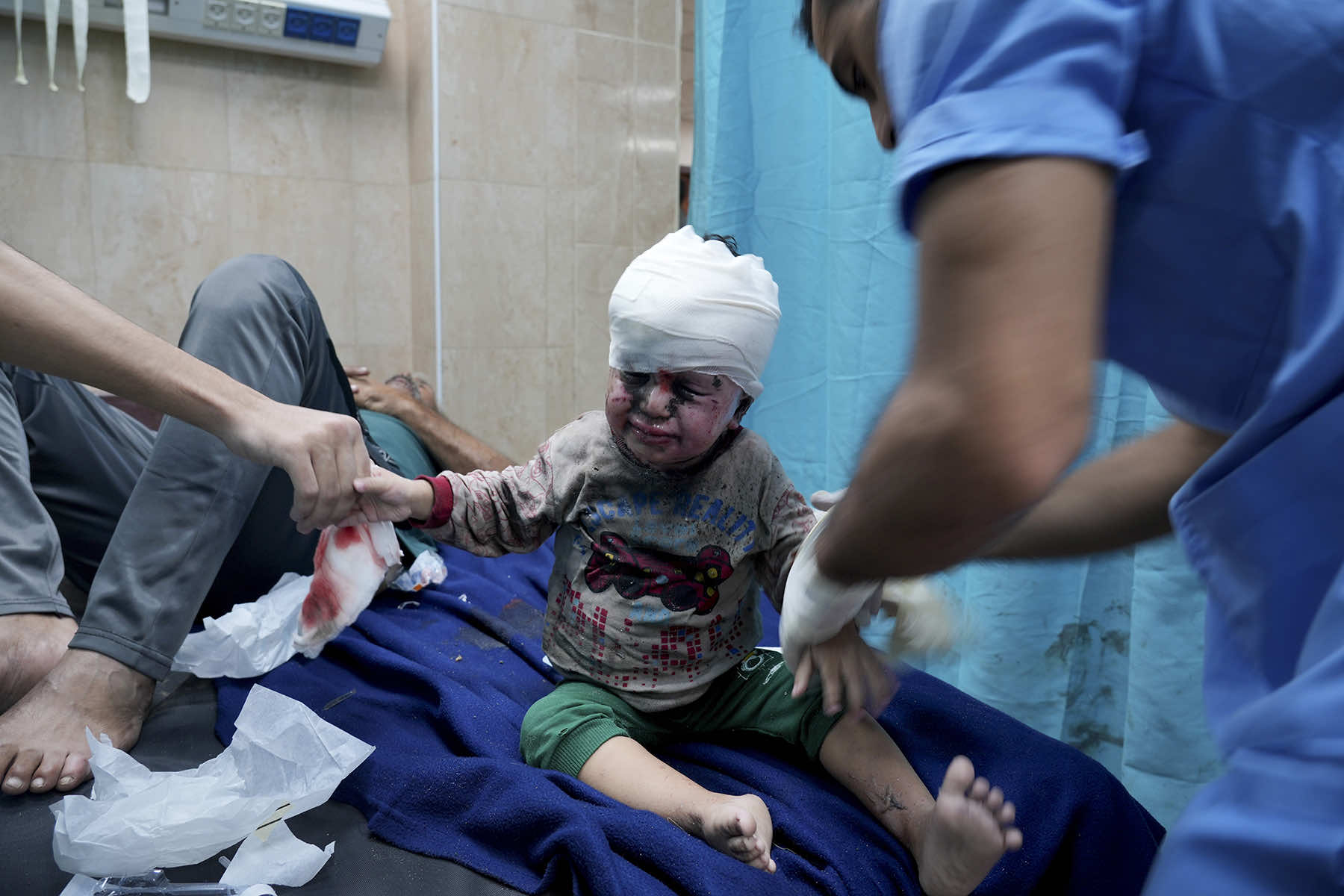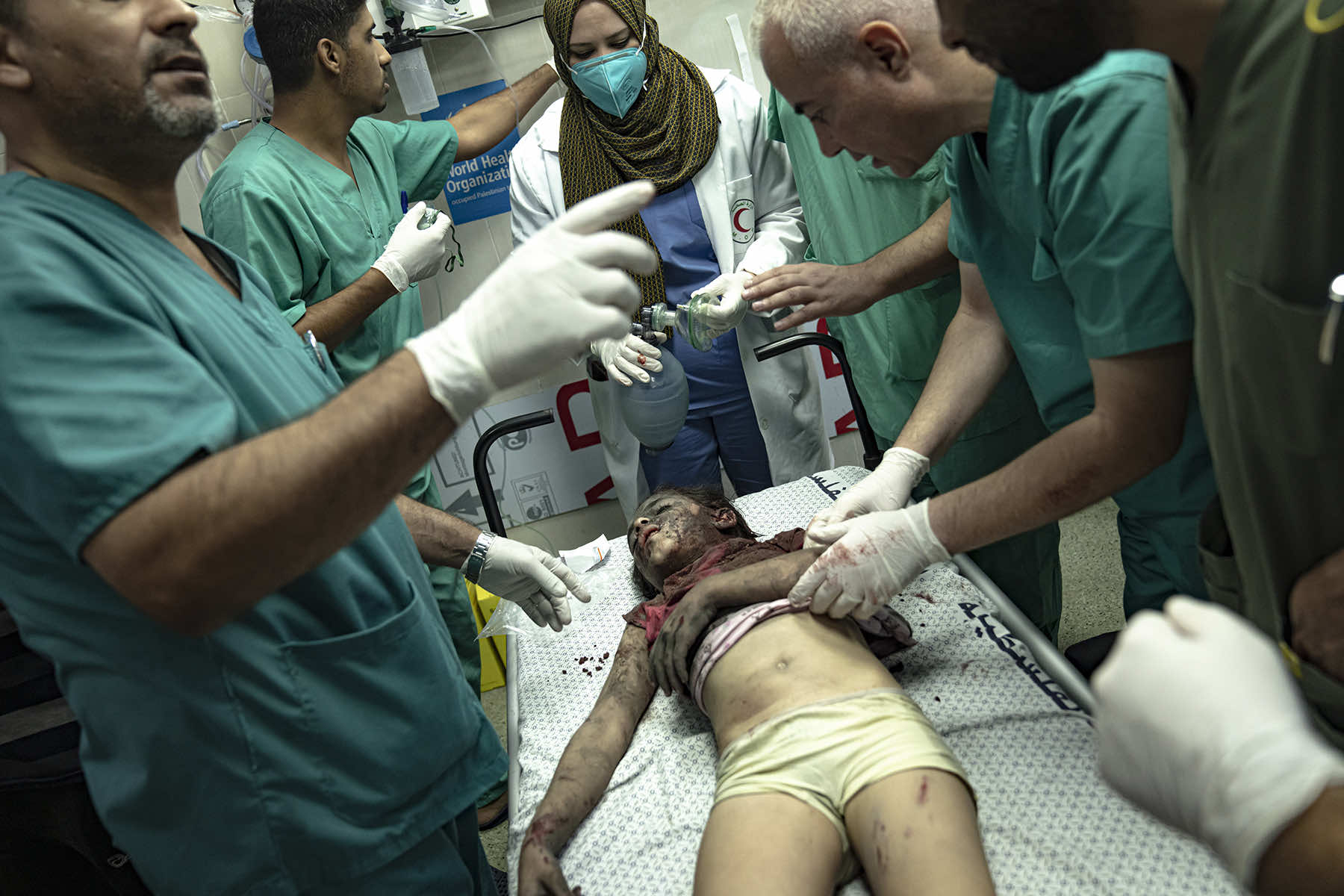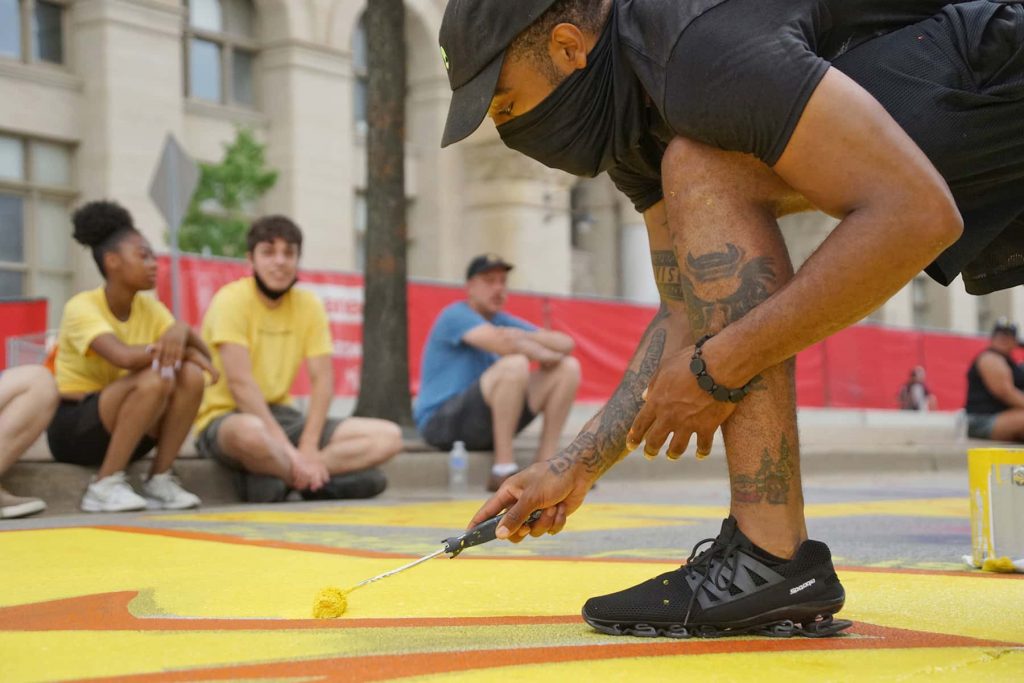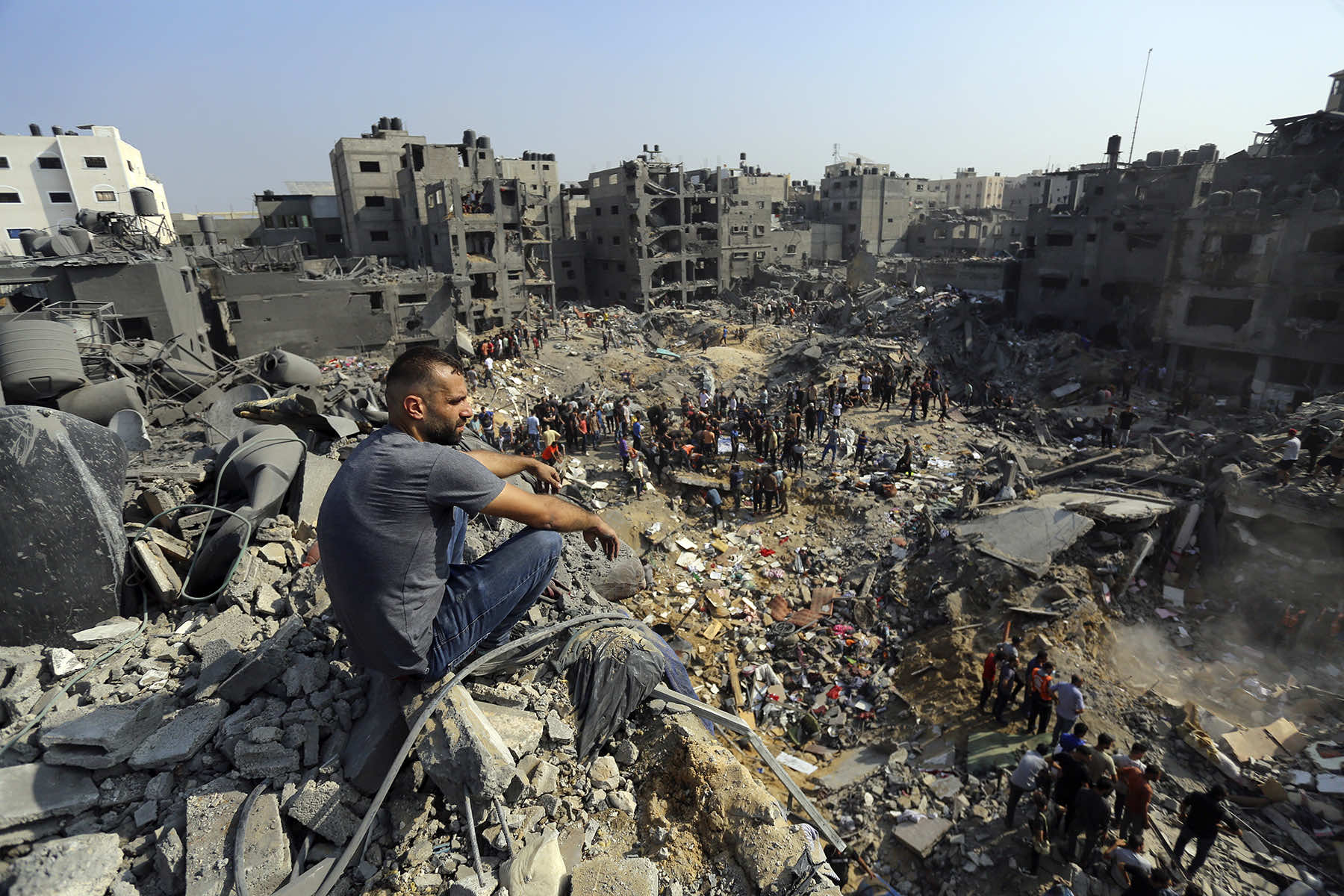
The Israeli army severed northern Gaza from the rest of the besieged territory and pounded it with airstrikes on November 6, preparing for an expected push by ground forces into the dense confines of Gaza City and an even bloodier phase of the month-old war.
Already, the Palestinian death toll passed 10,000 people, the Health Ministry in Hamas-run Gaza said on November 6. The ministry does not distinguish between fighters and civilians. Some 1,400 Israelis have died, mostly civilians killed in the October 7 incursion by Hamas that started the war.
The war has quickly become the deadliest Israeli-Palestinian violence since Israel’s establishment 75 years ago, with no end in sight as Israel vows to remove Hamas from power and crush its military capabilities.
Casualties are likely to rise sharply as the war turns to close urban combat. Troops are expected to enter Gaza City soon, Israeli media reported, and Palestinian militants who have had years to prepare are likely to fight street by street, launching ambushes from a vast network of tunnels.
“We’re closing in on them,” said Lt. Colonel Richard Hecht, an Israeli military spokesman. “We’ve completed our encirclement, separating Hamas strongholds in the north from the south.” The military said it struck 450 targets overnight and ground troops took over a Hamas compound.
BOMBARDMENT IN NORTH GAZA
Several hundred thousand people are believed to remain in the north in the assault’s path. The military says a one-way corridor for residents of Gaza City and surrounding areas to flee south remains available. But many are afraid to use the route, part of which is held by Israeli troops.
In recent days, airstrikes have hit U.N. facilities where thousands are sheltering, as well as hospitals, which have been overwhelmed by wounded and running low on power and supplies.
A strike early on November 6 hit the roof of Gaza City’s Shifa Hospital, killing a number of displaced people sheltering on its top floor and destroying solar panels, said Mohamed Zaqout, general manager of all hospitals in Gaza. The panels have been helping keep power on in the facility, which has been reduced to using one generator because of lack of fuel.
Heavy Israeli bombardment overnight hit the Shati refugee camp, a densely built-up district on the Mediterranean coast adjacent to central Gaza City, Palestinians who fled south on November 6 reported. They said houses in the district were reduced to rubble with unknown numbers of people trapped underneath.
Ghassan Abu Sitta, a surgeon at Shifa Hospital, told The Associated Press the hospital buildings shook all night from the bombardment “and we started getting the bodies and the wounded. It was horrendous.”
Around 70% of Gaza’s 2.3 million residents have fled their homes since the war began. Food, medicine, fuel and water are running low, and U.N.-run schools-turned-shelters are beyond capacity. Many people are sleeping on the streets outside.
Mobile phone and internet service went down overnight, the third territory-wide outage since the start of the war, but was gradually restored on November 6.
NO SIGN OF HEADWAY ON PAUSE
Israel has so far rejected U.S. suggestions for a pause in fighting to facilitate humanitarian aid deliveries and the release of some of the estimated 240 hostages seized by Hamas in its raid. Israel has also dismissed calls for a broader cease-fire from Arab countries.
After days of intense diplomacy around the Middle East, U.S. Secretary of State Antony Blinken wrapped up his tour of the region. He said efforts to secure a humanitarian pause, negotiate the hostages’ release and plan for a post-Hamas Gaza were still “a work in progress” without pointing to any concrete achievements.
The war has also stoked wider tensions, with Israel and Lebanon’s Hezbollah militant group trading fire along the border. In another sign of growing unrest, a Palestinian man stabbed and wounded two members of Israel’s paramilitary Border Police in east Jerusalem before being shot dead, according to police and reporters at the scene.
Israel captured east Jerusalem, along with Gaza and the West Bank, in the 1967 Mideast war. The Palestinians want all three territories for a future state. Israel annexed east Jerusalem in a move not recognized by most of the international community; it considers the entire city its capital.
In northern Gaza, a Jordanian military cargo plane air-dropped medical aid to a field hospital, King Abdullah II said on November 6. It appeared to be the first such airdrop of the war, raising the possibility of another avenue for aid delivery besides Egypt’s Rafah crossing.
Over 450 trucks carrying aid have been allowed to enter Gaza from Egypt since October 21. But humanitarian workers say the aid is far short of mounting needs.
The crossing was closed on November 4 and November 5 because of a dispute among Israel, Egypt and Hamas. But it reopened on November 6 and seven Palestinian patients were evacuated to Egypt, the International Committee of the Red Cross said.
FLEEING SOUTH
Some 800,000 people have heeded Israeli military orders to flee to southern Gaza. But Israeli bombardments continue across the territory, and strikes in central and southern Gaza — the purported safe zone — killed dozens of people on November 5. Israel blames civilian casualties on Hamas, accusing the militants of operating in residential neighborhoods.
After another strike on November 6, in the southern town of Khan Younis, men dug through the rubble with sledgehammers and their bare hands. A young boy caked in dust screamed as he was rolled onto a stretcher and carried away. At least two people were killed, according to a reporter at the scene.
Palestinians held a mass funeral on November 6 for 66 people laid out on the ground outside a hospital morgue in the central town of Deir al-Balah. A man with bandages wrapped around his head placed his hand on a child’s body and wept.
The Health Ministry said that 10,022 people have been killed in Gaza, including over 4,100 children and 2,600 women. More than 2,300 people are missing and believed to be buried under the rubble of destroyed buildings, the ministry said.
In the overnight strikes in Gaza, the Israeli military said it had killed a senior Hamas militant, identified as Jamal Mussa, who allegedly carried out a shooting attack against Israeli soldiers in Gaza in 1993.
It said 30 Israeli troops have been killed since the ground offensive began in late October. Hamas and other militants have continued firing rockets into Israel, disrupting daily life even as most are intercepted or fall in open areas. Tens of thousands of Israelis have evacuated from communities near the volatile borders with Gaza and Lebanon.

